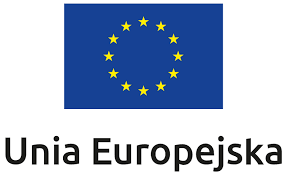
Our last project addressed to a customer provides products to the medical industry and it is an automatic device for mounting the bushing into the ferrite connector. It is a device with a small dimension, but having many systems that improve the process of pressing and testing the accuracy of the bushing application.
On the structure with the swivel wheels, the connection services and the final check of details begin. Connectors and bushings are delivered to the wheel from cylindrical baskets by means of vibratory feeders. On the wheel, when the connector is applied, the bushing is pressed.

Control vision systems
Verification of effectiveness is already carried out using the installed optical camera, which in the next production stage, checks the correctness of inserting the given element and the quality of the pressed bushing. In a subsequent step on the swivel wheel, there is an additional selection of the smallest details and the final rejection of those that raise doubts. The effectiveness of the optical camera allows to estimate the next element every second.
Before the quality tests, the camera used by MADevice receives a pattern – a perfectly made element that complies with all quality standards set by the manufacturer. At the advanced level of optics there is constant comparison of the following parts with the original one. Materials departed from the pattern are rejected – the system integrated with the optical camera will attend to it.
This technology is characterized by simplicity of service and full of robotics and at the same time considerable possibilities of identification, analysis, quality tracking of individual components throughout the production process.
Where else should control vision systems be used?

Modern vision technologies – both standard and 3D are increasingly used in automatic manufacture and logistics. The flexibility and versatility are the unquestionable advantages of optical camera systems. The vision system created on the basis of these devices has no restrictions and effectively verifies the condition of any material of any size, shape and technology. They are used in quality control, robot positioning, barcode and graphic and alphanumeric barcode reading, and more recently in occupational safety systems.
However, there are industries in which precision guaranteed by their operation is particularly important. Vision systems will prove themselves primarily in the case of production stations that require constant inspection of details. They enable checks on the accuracy of installation, durability of used materials, elimination of defective products, which in turn will reduce the costs of potential complaints.
According to the estimates of producers, about 20 percent of vision systems applied in current production, are used by automotive industry in a broad sense. This refers not only to automotive factories, but also to companies dealing in subassemblies and accessories. Vision systems are also eagerly used in the glass industry, where a quick reaction to production errors that threaten the life or health of users is equally important. They are used more and more willingly in the food industry because they allow to control the packaging of goods.
The control cameras are perfectly slotted to the quality control solutions of most consumer goods and packaging. However, the easy interface ensures trouble-free commissioning and service. The natural destination is the continuous improvement of the parameters achieved, a deeper degree of automation – and thus even more sensitive devices with increasing resolution and the possibility of fast image transfer.

Everything is going to one thing: such a degree of comparison of each element with its prototype, so that it would be a hundred percent reflection.

